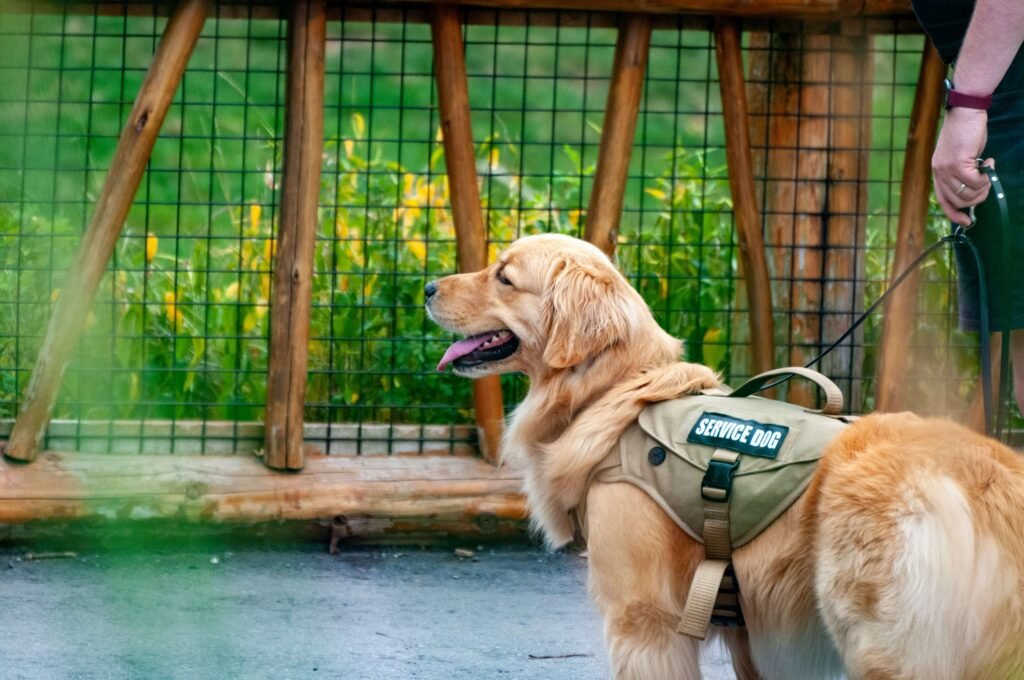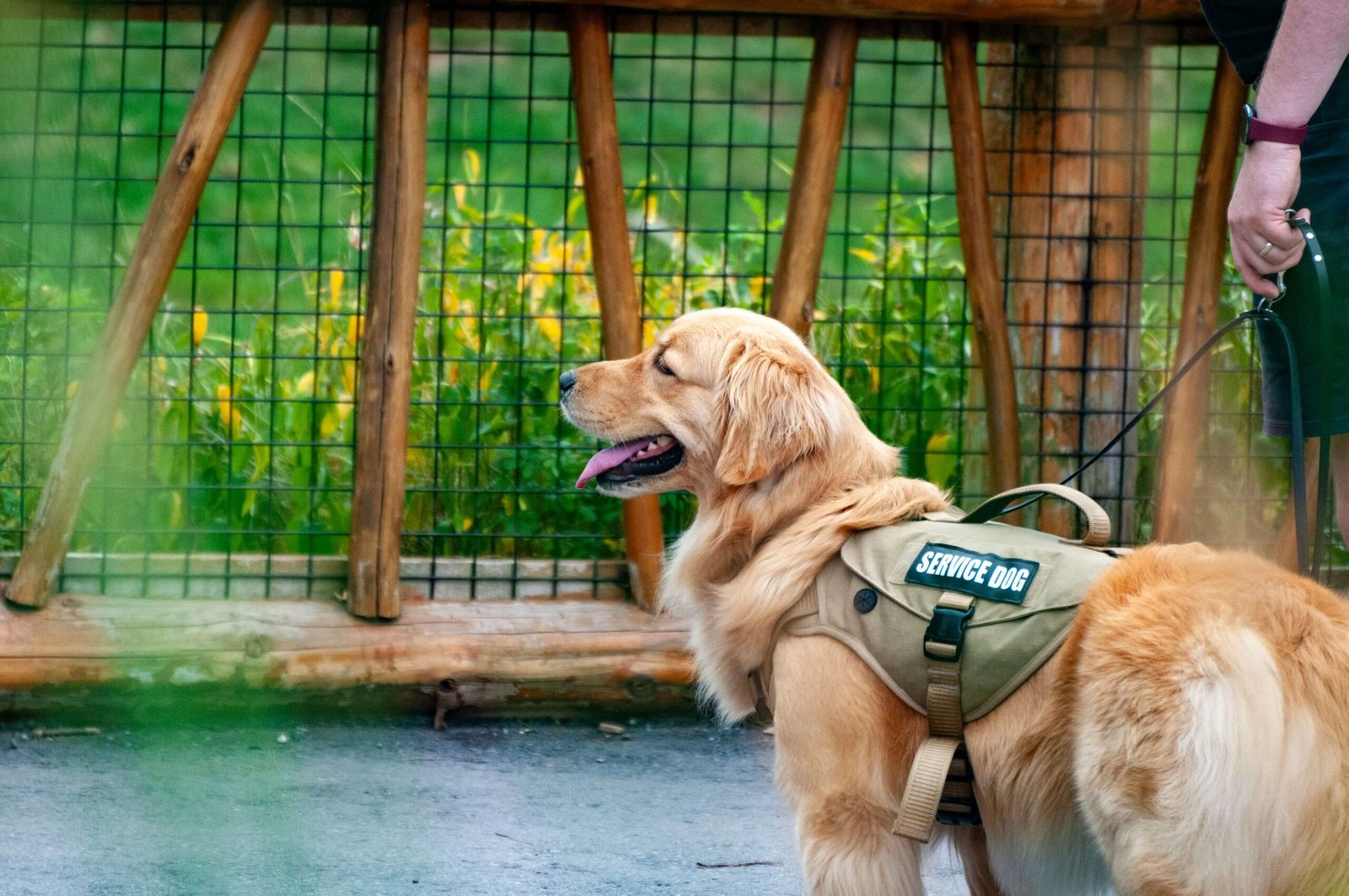Service Dogs for Seizures: A Lifeline for Individuals with Epilepsy
Living with epilepsy or seizure disorders can be challenging, but service dogs trained to assist during seizures offer a unique and invaluable form of support. These highly skilled animals are more than just companions—they are lifelines that provide safety, independence, and peace of mind. Service dogs for seizures are trained to detect the onset of a seizure, alert their handlers, and even provide physical assistance during or after an episode.
In this blog post, we’ll explore how these incredible dogs are trained, the benefits they offer, and what to consider if you’re thinking about partnering with a seizure response dog. By the end, you’ll have a deeper understanding of the profound impact these dogs can have on the lives of individuals with seizure disorders.
How Service Dogs Help During Seizures
Service dogs for seizures are trained to perform specific tasks that mitigate the risks and challenges associated with seizure disorders. Their abilities go beyond basic obedience, offering practical and emotional support to their handlers. Here’s how these dogs make a difference:
Seizure Alert:
Some dogs can sense changes in their handler’s body chemistry and provide advance warning of an impending seizure.Seizure Response:
During or after a seizure, dogs can retrieve medications, press medical alert buttons, or fetch help from nearby individuals.Physical Support:
Trained dogs can brace their handlers to prevent falls or help them regain balance after a seizure.Comfort and Reassurance:
After a seizure, dogs often provide calming companionship to reduce anxiety and promote recovery.Medical Assistance:
Dogs can activate emergency systems or guide others to the handler’s location in critical situations.
These specialized skills empower individuals with seizure disorders to live more independently and confidently, knowing their dog is always by their side.
Training Process for Seizure Service Dogs
Training a service dog for seizures is a meticulous and time-intensive process that ensures the dog is equipped to handle the unique needs of their handler. Here’s an overview of the steps involved:
Basic Obedience Training:
The dog must master fundamental commands like sit, stay, and heel before progressing to specialized tasks.Public Access Training:
Dogs learn to remain calm and focused in various environments, such as crowded spaces or noisy settings.Task-Specific Training:
Each dog is trained to perform specific tasks, such as alerting to seizures, retrieving items, or providing physical support.Bonding with the Handler:
Building a strong relationship between the dog and their handler is crucial for effective teamwork and trust.Certification and Evaluation:
Once training is complete, the dog undergoes rigorous testing to ensure they meet the standards required for service work.
This comprehensive training process ensures that seizure service dogs are reliable, well-behaved, and capable of performing their duties effectively.
Check this guide 👉ADHD Service Dogs: Best 7 Expert Tips!
Check this guide 👉How to Catch a Fake Service Dog: Best 7 Expert Tips!
Check this guide 👉Can I Train My Own Service Dog? Best 7 Expert Tips!

Benefits of Seizure Service Dogs | Examples of Tasks They Perform |
|---|---|
Increased Independence | Alerting to an upcoming seizure |
Enhanced Safety | Retrieving medication or a phone |
Emotional Support | Providing comfort after a seizure |
Reduced Anxiety | Staying close to offer reassurance |
Emergency Assistance | Activating medical alert systems |
Qualities to Look for in a Seizure Service Dog
Choosing the right dog for seizure service work is critical to ensuring a successful partnership. Here are some important qualities to consider when selecting a dog for this role:
Temperament:
The dog should be calm, patient, and able to remain composed in stressful situations.Trainability:
A willingness to learn and adapt is essential for mastering complex tasks.Physical Stamina:
Service dogs need the energy and strength to perform physical tasks like bracing or guiding.Socialization Skills:
The dog must feel comfortable interacting with people and navigating diverse environments.Health and Longevity:
A healthy dog with no genetic predispositions to illness ensures a long and reliable working life.
By prioritizing these qualities, you can find a dog that excels in providing support and companionship to individuals with seizure disorders.
Challenges and Considerations When Partnering with a Seizure Service Dog
While seizure service dogs offer immense benefits, there are also challenges and considerations to keep in mind before committing to this partnership.
Cost of Training:
Professional training for service dogs can be expensive, often costing thousands of dollars.Time Commitment:
Building a strong bond and maintaining the dog’s training requires ongoing effort and dedication.Public Misunderstanding:
Some people may not understand the role of service dogs, leading to unwelcome questions or comments.Handler’s Lifestyle:
The handler’s daily routine and living environment must accommodate the needs of a service dog.Dog’s Well-Being:
Ensuring the dog’s physical and mental health is a priority to maintain their ability to perform effectively.
Understanding these factors helps set realistic expectations and ensures a successful partnership between the handler and their service dog.
Signs Your Dog Could Be a Good Candidate for Seizure Service Work
Not all dogs are naturally suited for the demanding role of a seizure service dog. However, certain traits can indicate whether a dog has the potential to excel in this field. Here are signs that your dog might be a good fit:
Calm Demeanor:
A dog that remains relaxed in chaotic or unfamiliar environments is more likely to handle the pressures of service work.Strong Bond with Their Handler:
Dogs that show deep attachment and attentiveness to their owners are often better at responding to their needs.Keen Sense of Observation:
If your dog notices subtle changes in your behavior or routine, they may have the awareness needed for seizure detection.Desire to Please:
Dogs that are eager to follow commands and make their handlers happy tend to excel in training.Good Physical Health:
A dog free of chronic health issues is more likely to endure the physical demands of service work.
If your dog exhibits these qualities, they may have the potential to become a reliable seizure service dog with proper training.
Ways to Support Your Seizure Service Dog’s Well-Being
A seizure service dog’s ability to perform effectively depends on their physical and mental well-being. Here are ways to ensure your dog stays healthy and happy in their role:
Provide Regular Exercise:
Daily walks and playtime help maintain their physical fitness and mental sharpness.Schedule Routine Vet Check-Ups:
Regular veterinary care ensures early detection of any health issues that could affect their performance.Offer Mental Stimulation:
Puzzle toys, training sessions, and new challenges keep their mind engaged and prevent boredom.Ensure Proper Nutrition:
A balanced diet supports their energy levels and overall health, which is crucial for their demanding job.Allow Downtime:
Give your dog time to relax and decompress, especially after performing tasks or being in public spaces.
By prioritizing your dog’s well-being, you ensure they remain a reliable and joyful partner in managing seizure disorders.
Common Misconceptions About Seizure Service Dogs
There are several myths and misconceptions surrounding seizure service dogs that can lead to misunderstandings. Here’s a look at some common ones and the truth behind them:
Myth: All Seizure Dogs Can Predict Seizures:
While some dogs can detect seizures before they happen, not all service dogs are trained for this specific task.Myth: Service Dogs Are Always On Duty:
Even service dogs need breaks and downtime to rest and recharge, just like any working animal.Myth: Only Certain Breeds Can Be Seizure Service Dogs:
While some breeds are commonly used, any dog with the right temperament and training can serve in this role.Myth: Seizure Dogs Are Fully Autonomous:
These dogs rely on their handlers to provide guidance and support, even as they assist during emergencies.Myth: Training Ends Once the Dog Is Certified:
Ongoing training and reinforcement are necessary to maintain the dog’s skills and adapt to new challenges.
Understanding these truths helps dispel myths and fosters greater appreciation for the hard work and dedication of seizure service dogs and their handlers.
Frequently Asked Questions About Seizure Service Dogs
Can any dog be trained as a seizure service dog?
Not all dogs are suited for this role; temperament, trainability, and health are key factors.
How do dogs detect seizures?
Some dogs can sense subtle changes in body chemistry, though the exact mechanism isn’t fully understood.
Is certification required for seizure service dogs?
While certification is not legally required in many places, it demonstrates the dog’s training and reliability.
How long does it take to train a seizure service dog?
Training typically takes 1-2 years, depending on the dog’s progress and the complexity of tasks.
Can I train my own seizure service dog?
Yes, but it requires significant time, resources, and expertise to ensure the dog meets service standards.
Final Thoughts: Transforming Lives Through Seizure Service Dogs
Service dogs for seizures are more than just highly trained animals—they are lifelines that transform the lives of individuals with seizure disorders. From detecting and responding to seizures to providing emotional support and independence, these dogs play an irreplaceable role in their handlers’ lives. While the journey of partnering with a seizure service dog comes with challenges, the rewards far outweigh the difficulties. If you or a loved one is considering this path, remember that the bond between a handler and their service dog is built on trust, mutual respect, and shared purpose. With the right preparation and commitment, a seizure service dog can become an invaluable companion, offering safety, confidence, and unconditional love every step of the way.
Why Is My Cats Second Eyelid Showing? Best 7 Expert Tips! Understand causes, health signs, and how to respond when your cat’s third eyelid becomes visible.
How Do I Know If My Cat Died Peacefully? Best 7 Expert Tips! Discover the quiet signs of a peaceful feline passing and find comfort in their final moments.
Cat Allergy Eyes: Best 7 Expert Tips! Discover why your eyes react to cats and learn proven strategies for relief—without giving up your feline friend.
Why Do Abyssinian Cat Colors Matter? Best 7 Expert Tips! Discover the genetics, rare hues, and care secrets behind Abyssinian coat colors for a healthier, happier cat.





